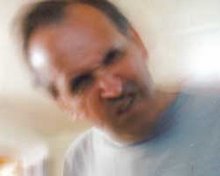Thursday, October 11, 2007
Yeesh.
Posted by
Joe's History Barn
at
6:18 PM
1 comments
![]()
Labels: Current Obsession.
Wednesday, October 10, 2007
Look up, way up.
I'm off for a bit, maybe just today, from the robot thing because I just found out that on this day in 1967, the Outer Space Treaty was brought into force. Thank heaven. Originally just the US, USSR and and the UK signed on, odd since the latter hasn't had too many space shots that I can see. Whats even odder is that to date there are nearly a hundred countries that are party to the treaty.
Claiming to be the "law" when it comes to space, this treaty lays out what you can and can't do up there. No nukes are allowed, and definetly none on the moon (or any other object for that matter). Same goes for any other kinds of weapons, however the law is surprisingly fuzzy around laser technology, suggesting there could be peaceful uses for mind frazzling death rays.
Just to ease my mind, I did some snooping and found a copy of the treaty. Some of the countries that signed it include: The Holy See, Luxembourg, the Seychelles and mighty space explorers, the Swiss.
Posted by
Joe's History Barn
at
6:04 PM
0
comments
![]()
Labels: Just so you know.
Tuesday, October 9, 2007
Karakuri ningyo man.
Posted by
Joe's History Barn
at
5:45 PM
0
comments
![]()
Labels: Current Obsession.
Monday, October 8, 2007
Captain Hercules Vinegar
He wrote because he needed the money, and since he got himself censored, and plays did not bring in the cash anymore, he returned to his first vocation, law. He didn't so well at that and money became tight. In fact, money would remain a constant worry in the Fielding house.
He loved satire and didn't have the time of day for Walpole, so while his plays were quieted, his novels weren't. The History of the Life of the Late Mr Jonathan Wild is an example of his hatred of the liberal ruling class.
1749 saw the publication of Tom Jones, his greatest work. Written in the picaresque style, the novel still holds up. Its detailed accounts of the day and robust sense of humour make it worthy of any bookshelf. Other lesser known works credited to him include a real odd piece about a female transvestite called The Female Husband, where this person is brought to court because he/she tried to marry another woman.
His interest in law and things conseravtive got him appointed London's Chief Magistrate. He took the post very seriously and together with his little brother John worked hard to make London safer and criminal justice, well, more just. It is said that he and John created London's first police force, the Bow Street Runners.
Posted by
Joe's History Barn
at
6:15 PM
0
comments
![]()
Labels: On this day.
Wednesday, October 3, 2007
Quack.
Posted by
Joe's History Barn
at
5:38 PM
0
comments
![]()
Labels: Current Obsession.
Tuesday, October 2, 2007
Beep.

Posted by
Joe's History Barn
at
6:11 PM
0
comments
![]()
Labels: I just don't know anymore, Oh God
Monday, October 1, 2007
A buck or two.
Actress Lois Maxwell, famous for her role as Miss Moneypenny in 14 James Bond films including The Spy Who Loved Me, View to a Kill and Dr. No died today. She was 80 years old. The Canadian born actress left home at 15 to join up and was touring Europe in a song and dance troup as a member of the Army Entertainment Corps when they figured out she was a minor. She was so good no one wanted her to be sent back so she enrolled in Royal Academy of Dramatic Arts in London. It turned out to be a good career move.
After the war she went to Hollywood and worked with Shirley Temple and Ronald Reagan in That hagen Girl, earning her a Golden Globe. Then she appeared in a Life Magazine spread featuring up and comers of the day with another aspiring actress - Marilyn Monroe.
Rome called and she lived there in the 50's where she worked in film and met her husband, Peter Marriot. Next its a move to London and a family was started. It was during this time that she was appraoched about what was to be her iconic role, the flirtatious secretary to M. She lasted through 2 Bonds, Sean Connery (argueably the best) and Roger Moore (most prolific).
Canadian born, she returned to Canada after her husband died in 1973 and worked in film and television, wrote a newspaper column and just hung out and chilled.
She moved back to England and thence to Fremantle Australia, where she died. Roger Moore said at one time "I think it was a great disappointment to her that she had not been promoted to play M. She would have been a wonderful M."
Posted by
Joe's History Barn
at
5:38 PM
0
comments
![]()
Labels: passings






